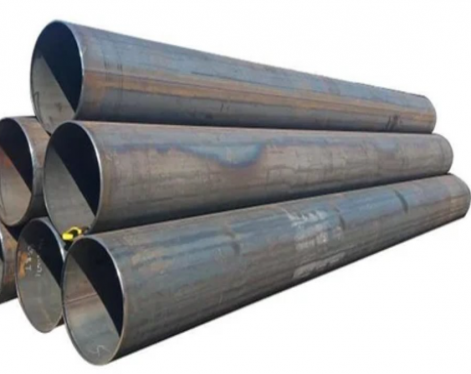In order to prolong the service life of steel pipes (such as seamless pipes and welded pipes), steel pipes are usually galvanized. Galvanized steel pipe is divided into two types: hot-dip galvanizing and electric galvanizing. Hot-dip galvanizing has a thick galvanized layer, which has the advantages of uniform coating, strong adhesion and long service life. The cost of electro-galvanizing is low, the surface is not very smooth, and its corrosion resistance is much worse than that of hot-dip galvanized pipes.
Hot-dip galvanizing is an anodic hot-dip coating required in a high-corrosion-resistant environment. For hot-dip galvanized coatings, the inspection items that need to be carried out are not exactly the same as those for hot-dip aluminum. The same project has different methods due to the different properties of the coating metal. So, how to detect the hot-dip galvanized layer?
Method for detecting hot-dip galvanized layer:
1. The adhesion test is carried out by weighing method, but the chemical solution for removing the hot-dip galvanized layer is a hydrochloric acid solution added with antimony trichloride and antimony trioxide.
2. Metallographic method or coating thickness tester can be used for coating thickness detection.
3. Copper sulfate dipping test method can be used to detect the uniformity of the coating.
4. The corrosion resistance test of the coating can be accelerated corrosion spray method and immersion test method.
5. The binding force test can be tested by bending test, scratch test, etc.
6. Surface roughness test Use a surface profiler to measure the surface roughness, or use a qualified standard test piece to compare with the surface of the sample by visual observation.

When the hot-dip galvanized coating is damaged when it encounters cutting or welding, it can be repaired with a hot-dip galvanized anti-corrosion repair coating. At room temperature of 20 degrees Celsius, the general period is 2 hours, and the zinc coating with a thickness of 45 microns can be repaired.
Steps to repair hot-dip galvanized coating:
1. First clean the soil or other oil stains and dirt on the surface of the hot-dip galvanized pipe below.
2. Remove the zinc coating on the surface (if it is necessary to renovate the hot-dip galvanized steel pipe) or clean the zinc coating near the damaged coating.
3. Spray the surface with anti-corrosion paint. Note: Aluminum paint on the market is not anti-corrosion paint.
Hot-dip galvanizing is an anodic hot-dip coating required in a high-corrosion-resistant environment. For hot-dip galvanized coatings, the inspection items that need to be carried out are not exactly the same as those for hot-dip aluminum. The same project has different methods due to the different properties of the coating metal. So, how to detect the hot-dip galvanized layer?
Method for detecting hot-dip galvanized layer:
1. The adhesion test is carried out by weighing method, but the chemical solution for removing the hot-dip galvanized layer is a hydrochloric acid solution added with antimony trichloride and antimony trioxide.
2. Metallographic method or coating thickness tester can be used for coating thickness detection.
3. Copper sulfate dipping test method can be used to detect the uniformity of the coating.
4. The corrosion resistance test of the coating can be accelerated corrosion spray method and immersion test method.
5. The binding force test can be tested by bending test, scratch test, etc.
6. Surface roughness test Use a surface profiler to measure the surface roughness, or use a qualified standard test piece to compare with the surface of the sample by visual observation.

When the hot-dip galvanized coating is damaged when it encounters cutting or welding, it can be repaired with a hot-dip galvanized anti-corrosion repair coating. At room temperature of 20 degrees Celsius, the general period is 2 hours, and the zinc coating with a thickness of 45 microns can be repaired.
Steps to repair hot-dip galvanized coating:
1. First clean the soil or other oil stains and dirt on the surface of the hot-dip galvanized pipe below.
2. Remove the zinc coating on the surface (if it is necessary to renovate the hot-dip galvanized steel pipe) or clean the zinc coating near the damaged coating.
3. Spray the surface with anti-corrosion paint. Note: Aluminum paint on the market is not anti-corrosion paint.









